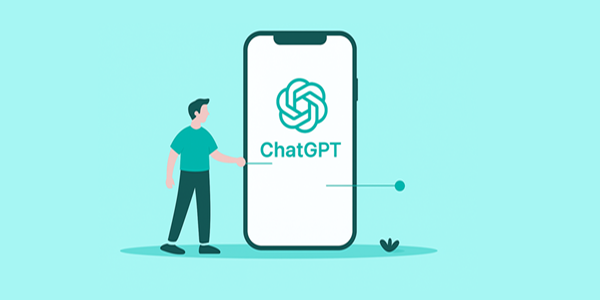
How Do I Get My Website to Show Up in ChatGPT Results?
Jun 24, 2025Learn how to boost your website’s chances of showing up in ChatGPT answers by optimising for Bing, using structured content, and applying smart SEO practices.
Learn more
More businesses use digital marketing today than any other time in history. If you’ve ever hit the boost function on a Facebook post you too are paying to be a part of it.
It’s never been easier or cheaper to spend money to get the word out about your product or service. You can pay Linkedin for the opportunity to message the CEO of a big firm, you can easily promote your products via Google Shopping Ads or get service enquiries using a lead generation strategy on META.
If you’ve done any of these things, you have given digital marketing a try.
One: You can reach customers more precisely online than in any other medium
Two: You can reach out instantly. You can decide to run an ad at 10am and starting reaching customers by 10.15am
Three: You can measure everything
Digital marketing allows businesses to reach specific audiences with a high degree of precision using tools like data analytics, behavioral tracking, and demographic targeting.
This precision is made possible through platforms like META, search engines like Google, and email marketing, which can segment audiences based on factors such as:
With these capabilities, marketers can tailor campaigns, delivering the right message to the right person at the right time, maximising engagement and conversion rates.
The best platforms for precise targeting in digital marketing depend on your goals, target audience, and the nature of your business.
Best for: Search intent-based marketing and display advertising.
Why: Google Ads allows businesses to show ads based on user searches or on websites within Google’s Display Network. With features like keyword targeting, demographic filters, retargeting, and geographical targeting, you can focus on users actively searching for products or services similar to yours.
Best for: B2C marketing, social engagement, and brand awareness.
Why: Facebook and Instagram offer deep audience segmentation based on user demographics, interests, behaviors, and even life events. You can retarget website visitors, create lookalike audiences, and advertise to people based on detailed personal data.
Best for: Visual brands, lifestyle products, and younger audiences.
Why: With its visual format, Instagram Ads are ideal for businesses that rely on strong visuals. You can target users based on interests, behaviors, and demographics, making it highly effective for most brands.
Best for: B2B marketing and professional targeting.
Why: LinkedIn allows businesses to target professionals based on job title, industry, company size, and more. It’s particularly effective for reaching decision-makers in B2B sectors and for advertising high-value products or services.
Best for: Video content marketing and brand building.
Why: As the second largest search engine, YouTube allows for video ad placements that target users based on their viewing habits, interests, demographics, and search history. You can also use retargeting to reach users who have interacted with your brand before.
Best for: Real-time engagement and thought leadership.
Why: Twitter offers targeting based on interests, demographics, keywords, and even specific accounts. It’s great for brands wanting to participate in real-time conversations and for promoting content to highly engaged communities.
Best for: Brands targeting younger audiences and viral content.
Why: TikTok’s ad platform offers a mix of creative formats and the ability to target users based on their engagement habits and content preferences. It’s especially effective for reaching Gen Z and millennials with viral video content.
Best for: Visual brands, lifestyle, fashion, and home decor.
Why: Pinterest users are often planning purchases or looking for inspiration, making it ideal for e-commerce, particularly for products in categories like fashion, home decor, and DIY. You can target users based on their interests and specific search keywords.
Best for: Brands targeting younger audiences (teens, millennials).
Why: Snapchat’s ad platform offers unique ad formats like Snap Ads and AR Lenses. It allows you to reach a highly engaged, younger audience based on location, interests, and behaviours.
Best for: Direct communication, retention, and nurturing leads.
Why: Email marketing allows for very personalised messaging based on segmentation criteria such as past purchases, engagement, or preferences. It’s highly effective for nurturing leads and customer retention.
Best for: Broad audience reach with specific targeting.
Why: Programmatic ads use automation and real-time bidding to purchase ad inventory across a wide variety of websites. You can precisely target users based on behavior, demographics, and context.

A big advantage of digital marketing is its immediacy. You can set up and launch an ad campaign quickly, often within minutes, on platforms like Google Ads, Facebook Ads, or Instagram Ads. Once the ad is live, it can start reaching customers almost instantly, sometimes within minutes or even seconds depending on the platform’s algorithm and ad approval process.
Once an ad campaign starts running, there are several optimisation strategies you can implement to improve performance in real-time.
What to do: Track essential metrics like Click-Through Rate (CTR), Conversion Rate (CVR), Cost Per Click (CPC), Cost Per Conversion (CPA), and Return on Ad Spend (ROAS).
Why: These metrics provide insights into how well your ad is performing and whether it’s resonating with your target audience.
How: Use the analytics tools provided by platforms like Google Ads, Facebook Ads, and others to regularly check performance and compare it against your goals.
What to do: Refine audience targeting based on the performance data.
Why: If certain segments are performing better (or worse), you can focus on the high-performing audiences and exclude underperforming ones.
How: Narrow or expand targeting by adjusting demographics, interests, behaviors, or geographic areas. You can also use retargeting to show ads to users who have already interacted with your brand.
What to do: Run multiple versions of your ad (different images, videos, headlines, or CTAs) to see which performs better.
Why: Testing creatives helps identify what messaging or design resonates most with your audience.
How: Most platforms allow for A/B testing (e.g., Google Ads’ “Experiment” feature or Facebook’s “Split Testing”). Regularly test different formats and optimize based on the winning variation.
What to do: Review where your ads are being shown (mobile, desktop, apps, specific websites, etc.) and adjust accordingly.
Why: Certain placements or devices may deliver better results for your audience. For example, mobile might outperform desktop, or certain websites in the display network might drive more conversions.
How: On platforms like Google Ads, you can exclude certain placements and focus your budget on high-performing ones. On Facebook and Instagram, adjust placements between Stories, Feeds, and Reels, based on performance.
What to do: Adjust your bidding approach to better align with your objectives (e.g., clicks, conversions, impressions).
Why: Optimising your bidding can reduce costs while increasing the chances of achieving your desired action, like more conversions.
How: If you’re aiming for conversions, consider switching from manual CPC to automated bidding strategies like Target CPA (Cost Per Acquisition) or Target ROAS (Return on Ad Spend) to maximise performance. Increase or decrease bid amounts for specific keywords or demographics depending on performance.
What to do: Ensure that the landing pages your ads direct to are aligned with the ad messaging and offer a smooth user experience.
Why: A high-performing ad is only as effective as the landing page it leads to. Poor landing pages can cause users to drop off, leading to wasted ad spend.
How: Make sure your landing page loads quickly, is mobile-optimised, has a clear call-to-action (CTA), and matches the ad content. Use A/B testing to experiment with different landing page designs or offers.
What to do: Regularly add negative keywords to avoid showing ads for irrelevant searches.
Why: Negative keywords help prevent your ads from showing up in irrelevant searches, which can waste budget and lower your quality score.
How: Analyse search term reports to find irrelevant queries, then add them as negative keywords to your campaign.
What to do: Set up remarketing campaigns to reach users who’ve already interacted with your website or ad.
Why: Retargeting often results in higher conversion rates because you’re reaching users who are already familiar with your brand or product.
How: Platforms like Google Ads and Facebook Ads allow you to create remarketing audiences based on past interactions, website visits, or specific actions like cart abandonment.
What to do: Reallocate your ad spend based on which campaigns, ad sets, or keywords are delivering the best results.
Why: If certain ads or targeting segments are underperforming, you can move that budget to areas where it’s having a better impact.
How: Regularly review campaign performance and shift budgets towards top-performing campaigns, ad groups, or keywords.
What to do: Ensure your ads are relevant to your target audience and aligned with their search intent.
Why: A higher ad relevance score can lead to better positioning and lower costs.
How: Optimise ad copy to match keywords closely, and ensure that the landing page is relevant to the ad and keywords. Improving these factors will help boost your Quality Score on Google Ads.
What to do: Don’t hesitate to pause ads that aren’t performing well.
Why: Underperforming ads drain your budget without delivering results. Pausing them frees up resources for more effective campaigns.
How: Continuously monitor your ads, and if certain ones consistently underperform, pause them and allocate the budget to higher-performing ones.
With digital marketing we are trying to buy the attention of potential customers. We pay for this attention in the hope it’s returned by them paying for our product or service. By regularly monitoring and optimising, you can significantly improve the performance of your ad campaigns and maximise your return on investment (ROI).
Digital marketing is highly measurable. You can track and analyse almost every aspect of a digital campaign, from who sees the ad to how they engage with it, and what actions are taken.
What it measures: The number of times your ad was displayed.
Why it’s important: It gives you a sense of how often your ad is being seen, which is essential for brand awareness campaigns.
What it measures: The percentage of people who clicked on your ad after seeing it.
Why it’s important: A higher CTR indicates that your ad is engaging and relevant to your audience.
What it measures: The average cost you pay each time someone clicks on your ad.
Why it’s important: It helps you understand how much you are spending to drive traffic to your website or landing page.
What it measures: The percentage of users who take the desired action after clicking on your ad.
Why it’s important: It shows how effective your campaign is at driving real business outcomes.
What it measures: The average cost for each completed conversion
Why it’s important: It helps determine how cost-efficient your campaign is in achieving your goals.
What it measures: The revenue generated for every dollar spent on advertising.
Why it’s important: It gives you a clear picture of the financial return of your marketing efforts.
What it measures: The percentage of visitors who leave your website after viewing only one page without interacting.
Why it’s important: A high bounce rate may indicate that the landing page experience is not aligned with what the ad promised.
What it measures: The average amount of time users spend on your landing page or website.
Why it’s important: More time spent on a page often indicates that visitors are engaged with your content.
What it measures: Data on the age, gender, location, and other characteristics of the people interacting with your ads.
Why it’s important: This information helps you refine your audience targeting and understand who your ads are resonating with.
What it measures: How users interact with your website, including actions like clicks, downloads, and video plays.
Why it’s important: It provides insights into how visitors engage with your site, helping you optimise for better user experiences and conversions.
What it measures: How relevant your ads are to the audience based on factors like engagement and ad-copy-to-keyword relevance.
Why it’s important: Higher relevance or quality scores can improve your ad performance and lower your cost per click or impression.
What it measures: The predicted revenue that a customer will generate over the course of their relationship with your brand.
Why it’s important: Understanding LTV helps you assess the long-term value of your customer acquisition strategies.
What it measures: The cost of acquiring a new customer through marketing and sales efforts.
Why it’s important: CAC is crucial for evaluating the profitability of your digital marketing campaigns.
What it measures: Specific metrics like video views, watch time, and percentage of the video watched.
Why it’s important: Video metrics help you understand how engaging your video content is and how much of your message is being seen.
What it measures: The number of leads (email sign-ups, form completions) generated from your campaign.
Why it’s important: For B2B and service-based businesses, lead generation metrics are vital for tracking the effectiveness of your sales funnel.
Because every click, impression, and action is measurable, you can continually optimise your campaigns based on real-time data. This measurability is one of the biggest strengths of digital marketing, it allows for more agile, data-driven decision-making.
Online ads are unearned media, it’s bought and paid for and the customers you are targeting know it, they are inundated, they are suspicious, they are exhausted. Implement as many of these strategies as you can and go for excellence.
Remember without persistence and focus that the investment is wasted.
For any questions or queries about lead generation ads, talk to our digital strategist today